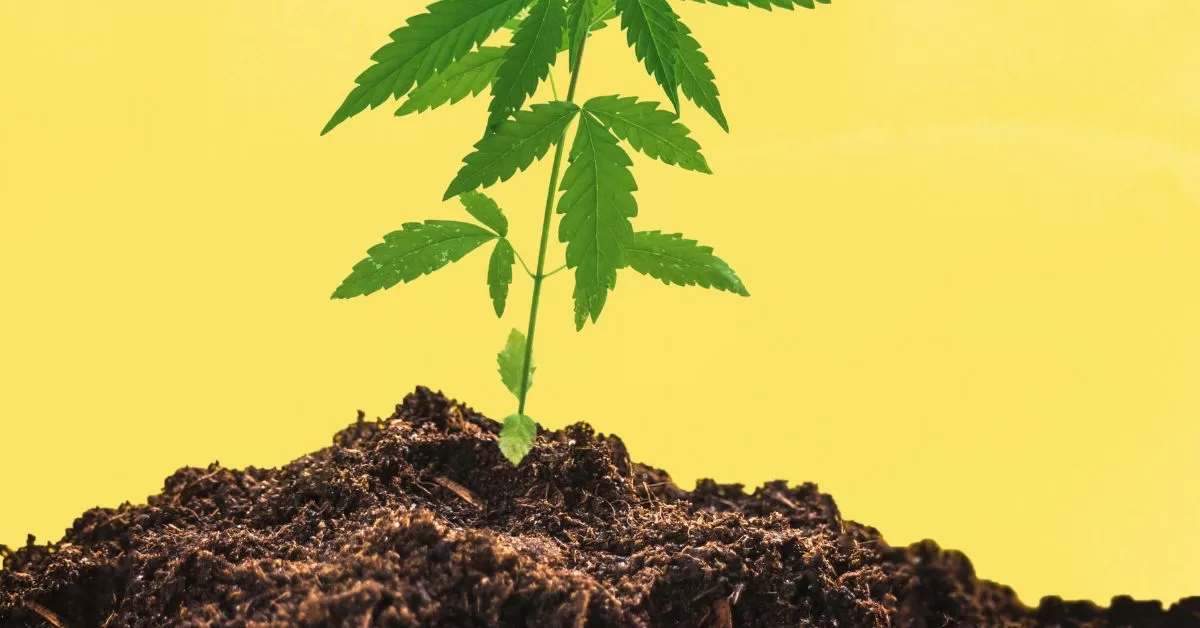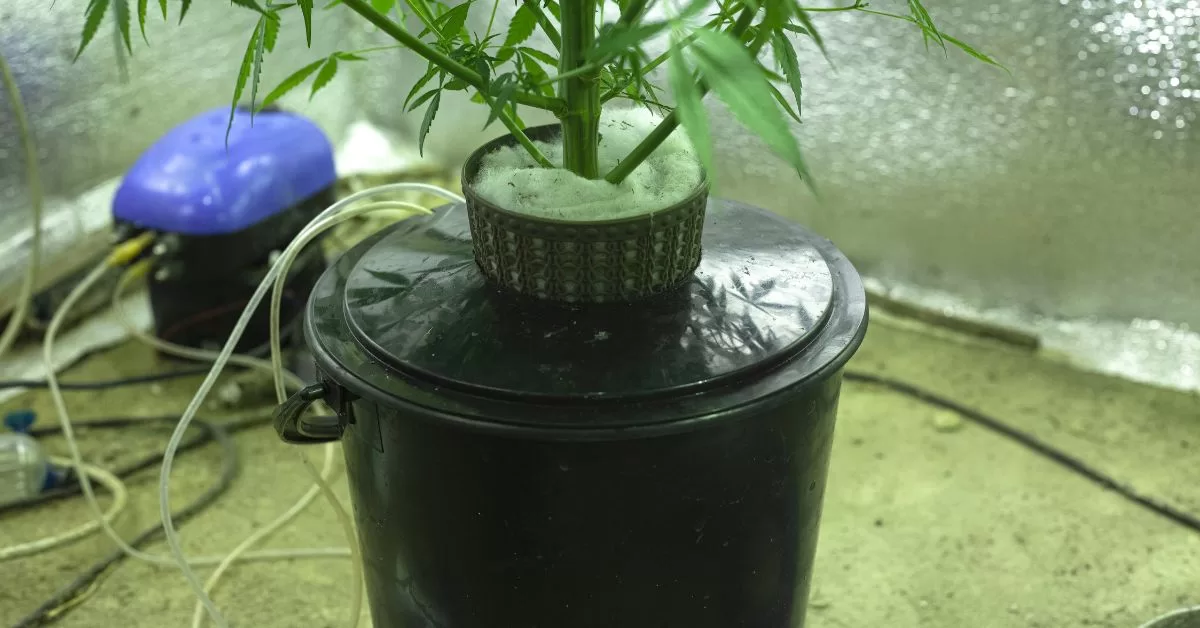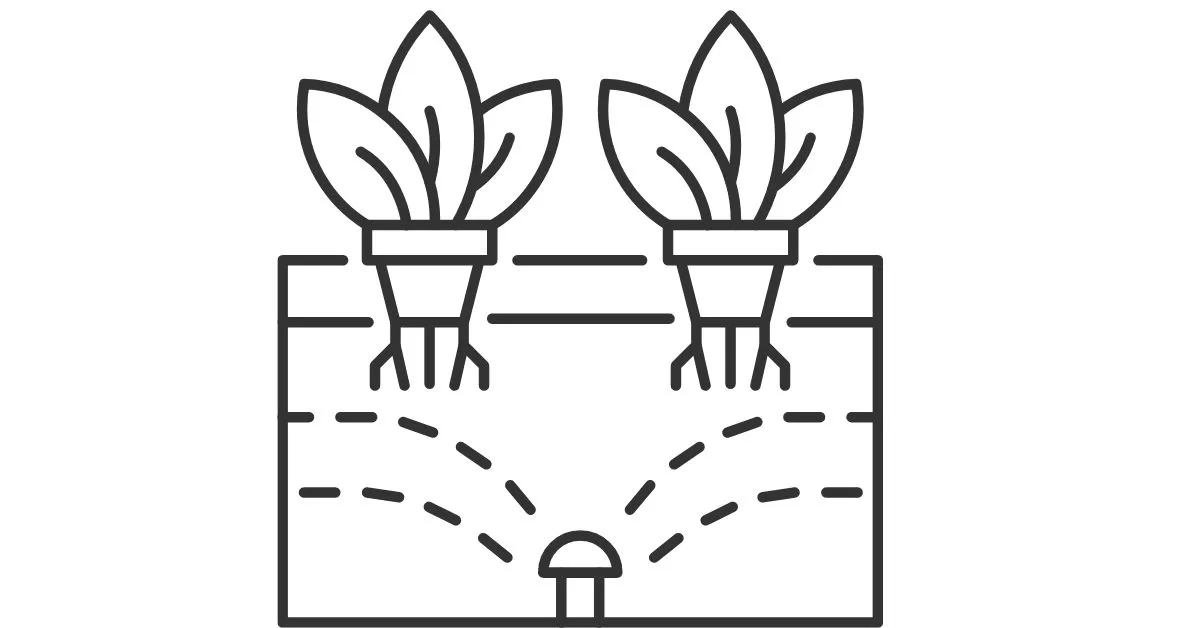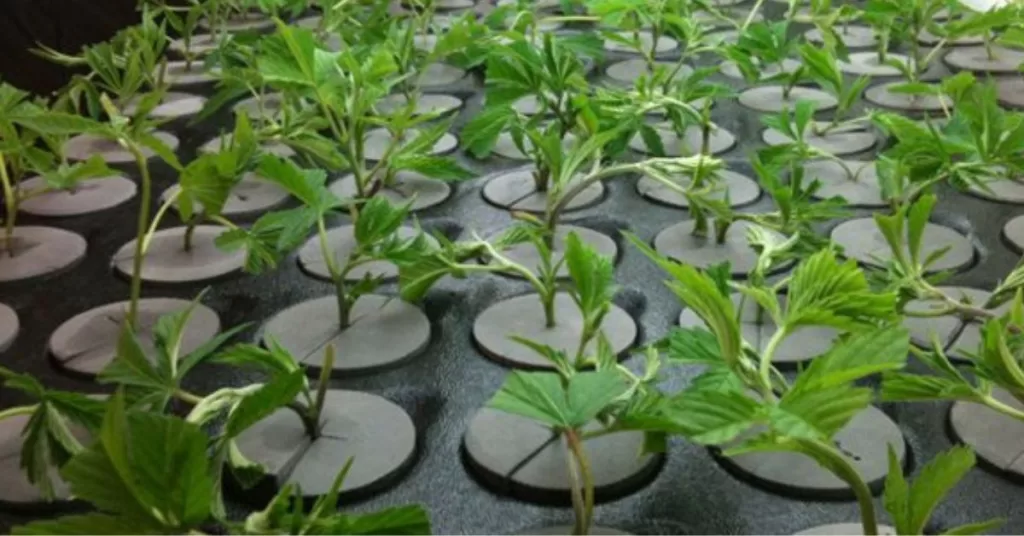As the cannabis industry continues to grow, so too does the need for innovative cultivation methods. One such method that has been gaining popularity in recent years is soil-less cannabis cultivation.
Soil-less cannabis cultivation is exactly what it sounds like – growing cannabis without soil. Instead of soil, growers use a variety of substrates such as coco coir, perlite, vermiculite, and rockwool.
This allows for greater control over the growing environment, resulting in higher yields and better-quality cannabis.
The use of soil-less cultivation is not a new concept in the world of agriculture. Hydroponics, for example, has been used to grow plants without soil since the early 20th century. However, it is only in recent years that soil-less cultivation has become popular in the cannabis industry.
Table of Contents
Benefits of Soil-less Cannabis Cultivation
Enhanced Control Over Nutrient Delivery
In soil-less cultivation, nutrients are delivered directly to the plant’s root system through a well-balanced nutrient solution.
This allows precise control over nutrient concentrations and ensures that plants receive the exact amounts they need at each growth stage. It eliminates the guesswork associated with soil-based cultivation and enables optimal nutrient uptake for healthy plant growth.
Increased Growth Rates and Yields
Soil-less cultivation methods, such as hydroponics, provide plants with an ideal growing environment.
With a consistent and readily available nutrient supply, plants can focus their energy on growth and development, resulting in faster growth rates and potentially higher yields compared to traditional soil cultivation.
Water Efficiency
Soil-less cultivation systems are highly water-efficient since water is recirculated and reused in most hydroponic setups.
The closed-loop systems minimize water waste and allow for precise control over water availability, reducing water consumption compared to soil-based cultivation.
This is particularly beneficial in regions with limited water resources or for growers aiming for sustainable practices.
Better Disease and Pest Management
Soil-less cultivation eliminates the risk of soil-borne diseases and pests that can affect traditional soil-based crops.
Without soil as a potential source of pathogens or pests, the risk of plant diseases is reduced, making it easier to implement preventive measures and maintain a healthy crop.
Consistent and Predictable Results
With soil-less cultivation, growers have more control over environmental factors such as pH, nutrient concentrations, temperature, and humidity.
This control allows for precise manipulation of growing conditions, resulting in consistent and predictable plant growth. It also enables growers to replicate successful results across multiple crops or cultivation cycles.
Space Optimization
Soil-less cultivation methods can be tailored to fit various space constraints. Vertical hydroponic systems or setups like aeroponics allow for maximizing vertical space utilization, making them ideal for indoor or limited space cultivation.
This can increase the potential yield per square foot and provide flexibility in crop planning.
Reduced Environmental Impact
Soil-less cultivation methods often require fewer pesticides and fertilizers compared to traditional soil-based cultivation.
The controlled environment and nutrient delivery systems minimize nutrient runoff and potential contamination of water sources. Additionally, the efficient use of resources, such as water and space, contributes to a reduced environmental footprint.
The Science Behind Soil-less Cannabis Cultivation
Soil-less cannabis cultivation relies on the principles of hydroponics. Hydroponics is a method of growing plants in nutrient-rich water, without soil.
Instead of soil, plants are grown in a substrate that provides support and allows for the exchange of gases and water.
In soil-less cannabis cultivation, the substrate is carefully chosen to provide the right balance of water retention, aeration, and nutrient holding capacity.
Growers must also carefully monitor the pH and nutrient levels of the water, to ensure that the plants receive the right amount of nutrients at each stage of growth.
Types of Soil-less Cannabis Cultivation Methods
There are several different methods of soil-less cannabis cultivation, each with its own advantages and disadvantages. Some of the most popular methods include:
Coco coir

Coco coir is a natural fiber that is extracted from coconut husks. It is an excellent substrate for cannabis cultivation, as it retains water well, while also providing good aeration and drainage. Coco coir is also renewable and environmentally friendly.
Rockwool
Rockwool is a synthetic substrate made from melted rock that is spun into fibers. It is a popular choice for cannabis cultivation, as it provides excellent water retention, while also allowing for good drainage and aeration. Rockwool is also sterile, which reduces the risk of pests and diseases.
Perlite

Perlite is a volcanic glass that is heated and expanded to create a lightweight, porous substrate. It is often used in combination with other substrates, such as coco coir or peat moss, to improve drainage and aeration. Perlite is also inexpensive and widely available.
Hydroponics

Hydroponics is a popular soil-less cultivation method that involves growing plants in a nutrient-rich water solution.
The roots of the plants are suspended in the nutrient solution, which is continuously circulated or intermittently flooded to provide oxygen and nutrients. Hydroponics allows for precise control over nutrient delivery, pH levels, and water availability, promoting rapid growth and high yields.
Aeroponics

Aeroponics is a soil-less cultivation method that involves suspending the plant roots in a mist or fog of nutrient-rich solution.
The roots are exposed to a highly oxygenated environment, promoting rapid growth. Aeroponic systems typically use misters or foggers to deliver the nutrient solution directly to the roots.
This method allows for precise control over nutrient delivery, minimizes water usage, and can result in faster growth rates and higher yields.
Comparison between Soil and Soil-less Cannabis Cultivation
There are several key differences between soil and soil-less cannabis cultivation.
One of the biggest differences is the level of control that growers have over the growing environment. With soil-less cultivation, growers can precisely control the pH, nutrient levels, and water content of the substrate. This means that the plants receive exactly what they need, when they need it.
Soil-less cultivation also allows for greater flexibility in terms of plant spacing and layout. Plants can be grown closer together, resulting in higher yields per square foot of growing space. This is particularly important in areas where space is limited.
Another advantage of soil-less cultivation is the reduced risk of pests and diseases. Soil can harbor a wide range of pests and pathogens, which can be difficult to control. By eliminating soil from the growing environment, growers can reduce the risk of infestations and disease outbreaks.
Common Soil-less Cannabis Cultivation Techniques
Nutrient Film Technique (NFT)
NFT is a hydroponic technique that involves growing plants in a shallow stream of nutrient-rich water. The roots of the plants are suspended in the water, and a thin film of water flows over the roots, providing them with nutrients and oxygen.
Deep Water Culture (DWC)
DWC is another hydroponic technique that involves suspending the plants’ roots in nutrient-rich water. In this method, the plants are grown in a large container filled with water, and an air stone is used to provide oxygen to the roots.
Drip Irrigation
Drip irrigation involves delivering water and nutrients directly to the roots of the plants, using a series of tubes and emitters. This method allows growers to precisely control the amount of water and nutrients that each plant receives.
Best Practices for Soil-less Cannabis Cultivation
To get the most out of soil-less cannabis cultivation, growers must follow a few best practices. These include:
Choosing the right substrate
Choosing the right substrate is critical to the success of soil-less cannabis cultivation. Growers should choose a substrate that provides good water retention, aeration, and nutrient holding capacity.
Monitoring pH and nutrient levels
Growers must carefully monitor the pH and nutrient levels of the substrate, to ensure that the plants receive the right amount of nutrients at each stage of growth.
Providing adequate lighting
Cannabis plants require a lot of light to grow and thrive. Growers must provide adequate lighting, either through natural sunlight or artificial grow lights, to ensure that the plants receive enough light to grow and produce high-quality buds.
Challenges of Soil-less Cannabis Cultivation
While soil-less cannabis cultivation offers many benefits, there are also some challenges to consider.
One of the biggest challenges is the initial cost of setting up a soil-less cultivation system. Growers must invest in equipment such as grow lights, pumps, and irrigation systems, which can be expensive.
Another challenge is the need for precise monitoring and maintenance of the growing environment. With soil-less cultivation, growers must carefully monitor the pH and nutrient levels of the substrate, as
well as the temperature and humidity of the growing environment. Any deviation from the ideal conditions can have a significant impact on plant growth and yield.
Future of Soil-less Cannabis Cultivation
Soil-less cannabis cultivation is still a relatively new approach, but it is already gaining popularity in the industry.
As more growers discover the benefits of this method, it is likely that we will see a continued shift towards soil-less cultivation.
In the future, we can expect to see new technologies and techniques developed that will further optimize soil-less cannabis cultivation.
This may include the use of artificial intelligence and machine learning to monitor and control the growing environment, as well as the development of new substrates and nutrient formulations.
Parting Remarks on Soil-less Cannabis Cultivation
Soil-less cannabis cultivation is an innovative approach that offers many benefits over traditional soil-based cultivation methods.
By carefully controlling the growing environment and providing plants with exactly what they need, growers can achieve higher yields and better-quality cannabis.
While there are some challenges to consider, the future of soil-less cannabis cultivation looks bright, and we can expect to see continued innovation and growth in this area of the industry.
If you’re interested in learning more about soil-less cannabis cultivation, or if you’re ready to make the switch to this innovative approach, contact us today to find out how we can help.
